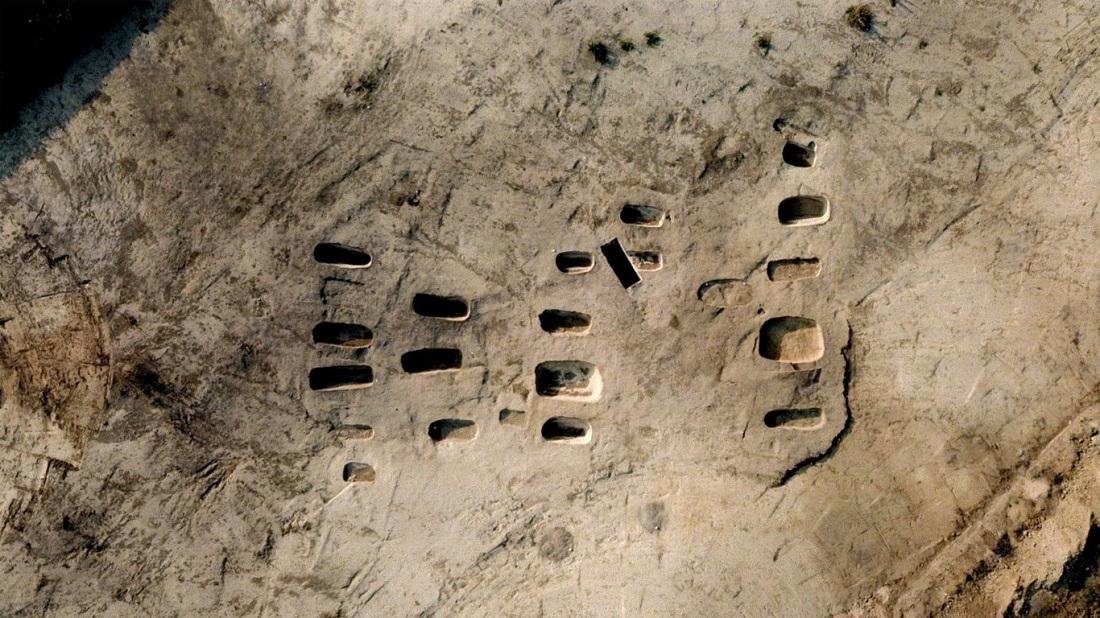A recent research project led by the Austrian Academy of Sciences has uncovered evidence of the plague pathogen in two young adult males who lived approximately 4,000 years ago during the Bronze Age. The burials were discovered in Drasenhofen, Lower Austria, in a cemetery containing a total of 22 graves.
 Credit: ArchaeoProtect/ÖAW
Credit: ArchaeoProtect/ÖAW
The two plague victims, aged 23-30 and 22-27, were buried in peripheral locations, suggesting that the community was aware of their deaths due to a contagious disease. The findings challenge the previous belief that the oldest plague deaths in Austria occurred during the Middle Ages.
The study, conducted by archaeologist Katharina Rebay-Salisbury from the Austrian Archaeological Insтιтute, in collaboration with the Max Planck Insтιтute for Evolutionary Anthropology, involved extracting samples from the victims’ tooth crowns, which allowed for the detection of pathogens present in their blood at the time of death.
Analysis of the samples confirmed the presence of Yersinia pestis, the bacterium responsible for the plague. Interestingly, the two individuals had different strains of the plague bacteria, indicating that they were infected at separate events.
 Credit: ArchaeoProtect/ÖAW
Credit: ArchaeoProtect/ÖAW
This suggests that the plague may not have been transmitted by fleas, as the early plague bacteria lacked genetic traits required for flea transmission. Other possible routes of infection, such as droplet transmission or the consumption of infected meat, are considered.
The discovery of the plague in Bronze Age individuals raises questions about the possible sources of infection. The victims could have been shepherds, exposed to plague pathogens during transhumance or while hunting wild animals. Involvement in military campaigns may have also contributed to the spread of the disease.
Notably, there is a gender imbalance among the compiled plague victims from prehistoric Eurasia, with more men than women succumbing to the disease. The reason for this disparity remains unknown and requires further investigation.
The identification of the plague in these ancient individuals sheds light on the early occurrence of the disease in Austria and provides insights into its transmission and possible cultural contexts.
The research team compared the genetic information of the two Bronze Age strains with other prehistoric, historic, and modern plague genomes to better understand the phylogenetic relationships and transmission patterns. The interdisciplinary analysis aims to bridge the fields of archaeology, anthropology, and genetics to deepen our understanding of the ancient plague and its impact on human populations.
The study also suggests that the early plague bacteria may have been transmitted through alternative routes, as opposed to flea transmission commonly ᴀssociated with later plague outbreaks.
Further research is needed to unravel the mysteries surrounding the gender imbalance among plague victims and to explore the cultural and historical contexts of the disease in ancient societies.
More information:





